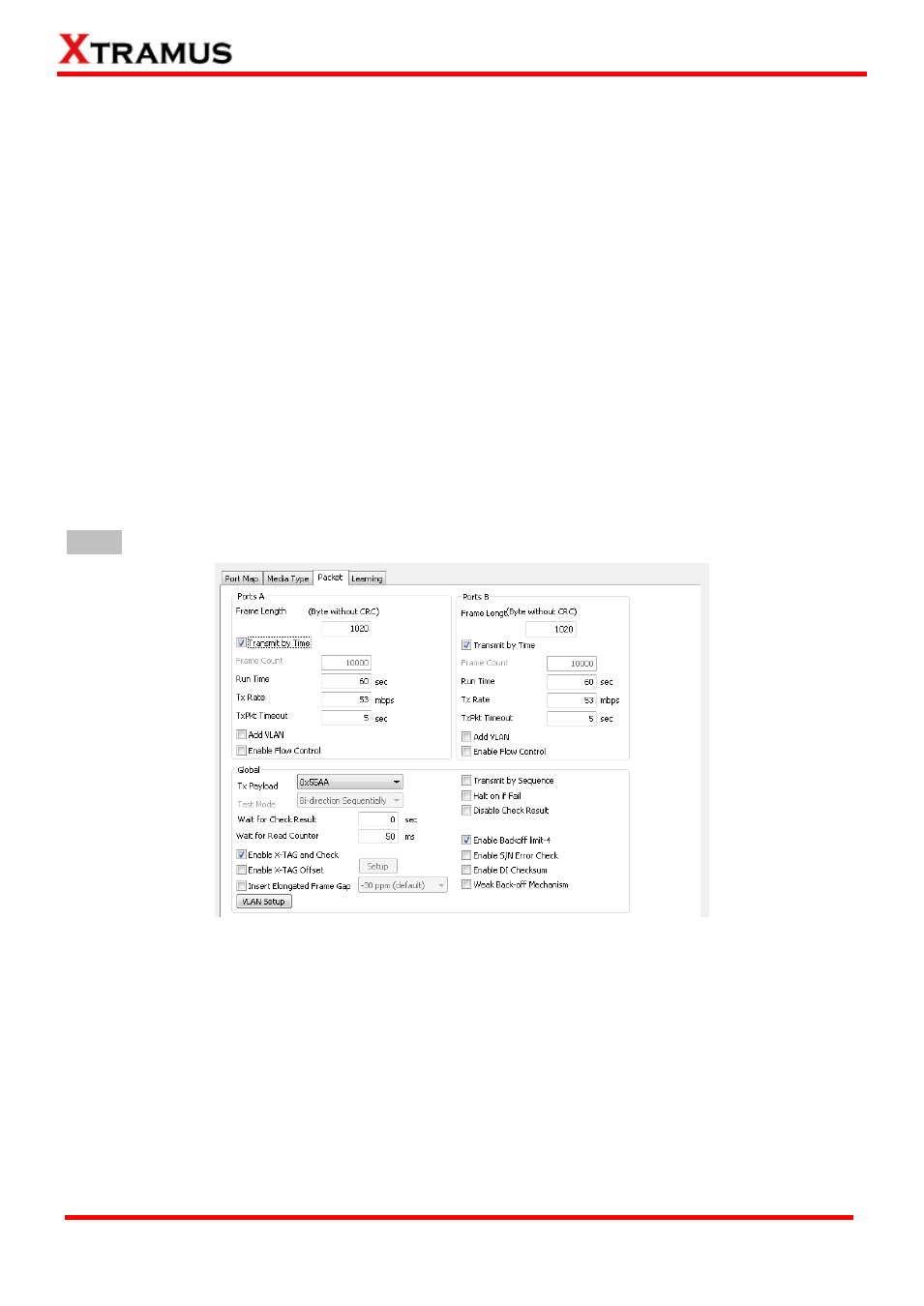Xtramus APMPT-4 V2.4 User Manual
Page 132

132
E-mail: [email protected]
Website: www. Xtramus.com
XTRAMUS TECHNOLOGIES
®
For Auto and Force mode, they include 10M/100M Half/Full, 1G Full and 10G. For Auto Max,
the system will auto-negotiate depending on the maximum capability of each module cards and
DUT (Device Under Test).
Minimum Waiting Time: APMPT-4 will halt at least for the Minimum Waiting Time you input
here during auto-negotiation process.
Media Type Waiting Timeout: If the time spent for auto-negotiation exceeds the Media Type
Waiting Timeout you set here, the test will stop and the test result will be fail.
Media Select: Choose between the Copper or Fiber cable that you are using for the test task.
Global:
Link up sequentially: Enabling this function will allow you to set the time interval for the next auto
link.
Link Status Check: Scrolling down this field to choose between Abort if Fail (the system will
abort the Link up sequentially function if the test fail), Bypass if Fail (the system will continue
with the Link up sequentially function even if the test fail) and Off to close this function.
Master Mode: This function is only available when the Media Type is set to be Force-1G.
Packet
Ports A/B:
Frame Length: You can set the frame length from 60~16300 bytes (Byte without CRC).
Transmit by time: Selecting this option will enable Run Time option, and the system will transmit
packet during amount of time set on Run Time field.
Frame Count: If you disable Transmit by time option, than Frame Count option will be available,
you can set here the frame count when processing the Learning function.
Tx Rate: Set the Tx Rate in Mbps in this field.
TxPkt Timeout: If the Tx packets spent for auto-negotiation exceeds the Tx Pkt Timeout you set
here, the test will stop and the result will be fail.